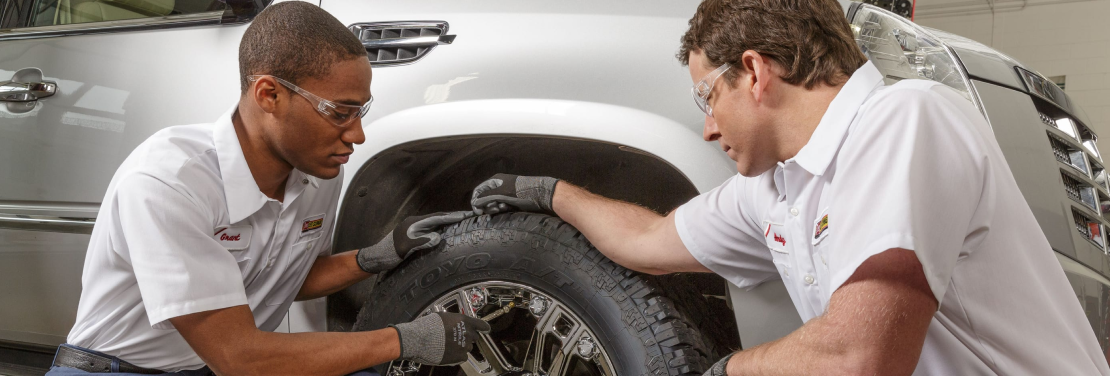Trust Fund Morris Tire and Alignment for Specialist Service and Treatment
Trust Fund Morris Tire and Alignment for Specialist Service and Treatment
Blog Article
Tire Solution: Recognizing Tire Stress Surveillance Equipments
Comprehending Tire Stress Monitoring Systems (TPMS) is a critical facet of maintaining optimal lorry efficiency and safety when traveling. With improvements in automotive innovation, TPMS has actually become a typical function in modern-day cars, giving real-time information on tire pressure degrees. Diving deeper into the details of TPMS, one can discover the numerous components that make up this system and the relevance of each in guaranteeing exact monitoring. From straight to indirect TPMS systems, the landscape of tire pressure surveillance varies, each with its special collection of benefits and factors to consider. Keep tuned to unravel the complexities of TPMS, from upkeep ideas to the obvious advantages of maintaining your tires effectively inflated. tires morris il.

Significance of TPMS
The value of Tire Pressure Tracking Equipments (TPMS) hinges on their capability to enhance car safety and performance through real-time monitoring of tire stress levels. Keeping the proper tire pressure is essential for making certain ideal handling, stopping, and general safety of a vehicle. TPMS supplies drivers with immediate feedback on any underinflated or overinflated tires, enabling for timely adjustments to be made.
Components of TPMS
Comprising numerous essential aspects, a Tire Stress Surveillance System (TPMS) functions as an advanced security function in modern-day automobiles. The main components of a TPMS include sensors, a control module, and a caution indication. Sensors are commonly situated in the tire valve stem or affixed to the wheel setting up, where they measure tire stress and transmit information to the control component. The control module processes this information and activates a caution if it identifies considerably reduced stress in any of the tires. The caution indicator, commonly a symbol on the dashboard, alerts the driver to examine the damaged tire or tires. Some advanced TPMS models also display the real tire stress analyses for every tire, offering vehicle drivers with real-time details to ensure optimum tire performance and safety. By keeping track of tire pressure continually, TPMS aids stop crashes, reduces tire wear, and improves fuel efficiency, making it an important component for vehicle security and performance.
Types of TPMS

On the various other hand, indirect TPMS counts on the automobile's wheel rate sensors to check tire pressure. This system finds underinflation by comparing the rotational rates of the wheels. Indirect TPMS is less expensive than direct TPMS, as it uses existing sensors within the car.
While straight TPMS supplies extra precise analyses, indirect TPMS is less complex in design and usually calls for less maintenance. Both systems have their limitations and benefits, and the choice in between them frequently depends on factors such as price, car make, and personal choice. Recognizing the distinctions between these 2 kinds of TPMS can assist car owners make educated decisions regarding tire upkeep and safety and security.
TPMS Maintenance Tips
Effective upkeep of TPMS is essential for guaranteeing optimal performance and security of your vehicle. Routinely examining the TPMS sensors for any damage or deterioration is important. Ensure that the sensing units are totally free and tidy from particles that can disrupt their functioning. In addition, it is recommended to inspect the sensing unit batteries regularly and change them as required to ensure exact analyses. Conduct regular look at the tire stress degrees and compare them with the TPMS analyses to ensure they are consistent. Alter the system adhering to the supplier's standards if there are any kind of discrepancies. During tire turning or replacement, make sure that the TPMS elements are dealt with thoroughly to avoid any type of potential damage. If the TPMS warning light brightens on the dashboard, deal with click this site the problem quickly by inspecting the tire stress and the general system for any mistakes. By adhering to these maintenance ideas, you can prolong the lifespan of your TPMS and improve the security of your driving experience.
Benefits of Appropriate Tire Pressure
Preserving correct tire stress, as stressed in TPMS Upkeep Tips, is essential for enjoying the various benefits connected with optimal tire pressure degrees. One of the main advantages of preserving the right tire stress is enhanced fuel performance. When tires are effectively blown up, there try this web-site is less rolling resistance, resulting in far better gas economy. In addition, appropriate tire stress guarantees also tire wear, extending the life-span of the tires and advertising much safer driving problems. With the appropriate tire stress, cars likewise have far better handling and traction, particularly in adverse weather conditions. This can enhance total driving efficiency and safety and security for the motorist and guests. Moreover, maintaining optimal tire stress can add to a smoother and more comfortable adventure by decreasing resonances and sound brought on by underinflated tires. To conclude, the benefits of appropriate tire pressure go beyond simply tire durability; they encompass improved gas performance, improved security, much better lorry efficiency, and total driving convenience.
Final Thought
Finally, comprehending tire stress monitoring systems (TPMS) is essential for keeping ideal tire pressure and guaranteeing automobile safety. By acknowledging the significance of TPMS, recognizing with its components, understanding the various types offered, sticking to correct maintenance pointers, and recognizing the benefits of preserving appropriate tire stress, motorists can improve their driving experience and prolong the life expectancy of their tires. Proper tire stress is essential to safe and reliable car Bonuses procedure.

Report this page